Trauma and The Cycle of Abuse: Breaking the Pattern
Breaking the harmful pattern of abuse in trauma is a function of understanding trauma and how it can contribute to the cycle of abuse. This foundation is germane to tackling trauma in our lives and relationships.
Trauma can be defined as a deeply distressing or disturbing experience, often involving an actual or perceived threat to one’s safety or well-being. Trauma is something deeply personal and often painful, which may be as a result of a single event or a series of experiences that leave us feeling scared, vulnerable, and deeply affected. It doesn’t just go away on its own. Consequently, it’s like the unwanted house guest that never seems to leave. It stays with us, having a profound impact on our physical, emotional, and psychological wellbeing.
When we talk about the cycle of abuse, we mean a repetitive pattern of behavior where a person with power and control inflicts pain on another person. It’s like a toxic dance where the abuser keeps the victim on their toes, never knowing what to expect next. This cycle can occur in many different ways, including, physical, emotional, verbal, financial, and sexual abuse. One thing about the cycle of abuse is that it’s not just about the abused behavior, but also about the way the abuser makes the victim feel. The abused might feel scared, confused, or guilty. In some situations, they might feel like they deserve the abuse or that they can’t escape from it.
So, how does trauma fit into all of this? Here’s the gist – trauma doesn’t just affect the person being abused, it affects the abuser as well. Hence, it can be both a cause and a consequence of the cycle of abuse. In a situation whereby a person experiences abuse as a child and that abuse was not properly addressed through proper psychological intervention, that trauma stays with them, affecting their relationships and how they see themselves. In essence, trauma makes them (abusers) repeat the same harmful behaviors they experienced themselves. As they grow up, they might find themselves in abusive relationships because that’s what they know. Beyond that, they might think that’s all they deserve. So, trauma is like a vicious cycle that keeps spinning round and round.
On the other hand, someone who experiences abuse as an adult might develop trauma as a result. They might feel scared, anxious, and depressed. They might feel like they can’t trust anyone or that they’re not safe. Consequently, making it harder for them to leave the abusive relationship.
Cycle of Abuse
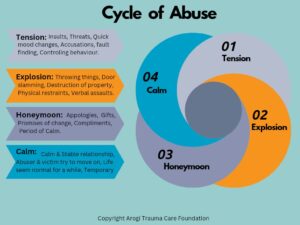
The cycle typically consists of four main phases, including the tension-building phase, explosion or acute battering incident, the honeymoon phase, and the calm or reconciliation phase.
Tension-building phase:
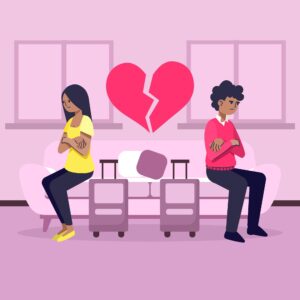
This phase is characterized by escalating tension, arguments, and minor incidents. The victim may feel like they are walking on eggshells, trying to avoid triggering the abuser.
Explosion or acute battering incident:

In this phase, the tension reaches its peak and often leads to an explosion of violence, abuse, or aggression. This can include physical, emotional, verbal, or sexual abuse. The victim may endure severe harm during this phase.
Honeymoon phase:

After an acute incident, the abuser may feel remorseful, apologetic, and promises to change their behavior. They may shower the victim with affection, gifts, or promises of a better future. This phase can create a sense of hope and relief for the victim.
Calm or reconciliation phase:

This phase follows the honeymoon phase, where the relationship appears to be calm and stable. Both the abuser and the victim may try to move on from the incident, and life may seem normal for a while. However, this phase is temporary, and the cycle often repeats itself, with tension building once again.
So, what can we do to break the cycle of abuse?
Breaking the Cycle of Abuse
Breaking the cycle of abuse requires a multifaceted approach that prioritizes the safety and well-being of the victim. Here are several steps that can be taken:
1.Recognise the Signs of Abuse:
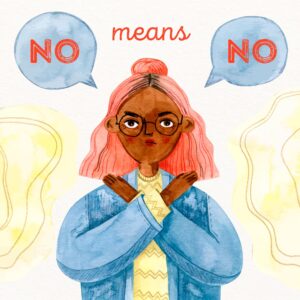
It is crucial for both the victim and those around them to recognize the signs of abuse and understand the cycle outlined above. Recognizing these signs of abuse is one of the essence of this article. That is providing education and awareness to empower individuals to identify abusive behaviors and take further action.
2.Acknowledge Trauma Exist:

The second step is to acknowledge that trauma exists. It is one thing to know the signs of abuse, it is purely another thing to acknowledge it as the existence of trauma. Some, despite awareness of the signs (Recognizing the signs of abuse) still deny the fact that it is trauma.
3.Classify and Label the Signs:

Having been aware and acknowledging that trauma exists, we need to properly classify it as something that is not okay and then classify it as a serious issue. Simply because we deserve to be treated with respect, kindness, and love, this perspective will help us to share a belief that it is not something we should ever have to accept or put up with. Trauma can’t be swept under the rug. In essence, we cannot pretend it’s not there. We just need to throw away that spectacle of denial from our eyes and shine a light on it and address it head-on.
4.Safety Planning:
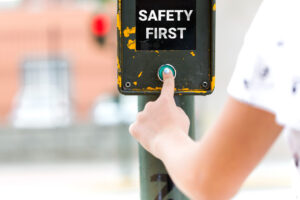
As a first aid, if we find ourselves in the picture of the above three steps, we should develop a safety plan to protect us during times of heightened risk, such as during the tension-building phase or acute battering incident. This plan may involve identifying safe spaces, contacting support networks, and accessing resources such as hotlines or shelters. Safe places can as well be our trusted friends, family members, or support groups for survivors of abuse. These can provide invaluable solidarity and guidance.
5.Self Care:
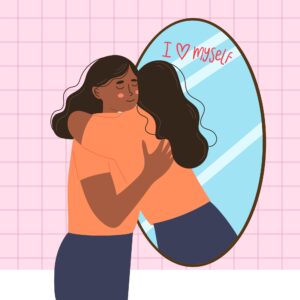
We need to take care of ourselves. This may entail setting boundaries, practicing self-care, and learning to love ourselves again. Establishing and enforcing clear boundaries with the abuser is essential for preventing further harm. This may involve communicating assertively, stating expectations for respectful behaviour, and being prepared to enforce consequences for boundary violations. It’s not an easy process, but it’s worth it. We deserve to be happy, healthy, and free from abuse. And we can get there, one step at a time.
6.Develop Independence:

One of the ways by which a victim of abuse can break the cycle of abuse is to assert their independence. Developing independence and self-sufficiency in terms of securing housing, employment, financial resources, and other necessities for rebuilding one’s lives is key to breaking the cycle of abuse. For instance, in an abusive relationship that involves financial exploitation, seeking a paid job or taking a self-paid job-like business is very important to breaking the cycle of financial abuse.
7.Holding Your Abuser Accountable:
Holding the abuser accountable for their actions is key to preventing further abuse and promoting justice. This may involve reporting the abuser to law enforcement, seeking legal protection orders, and pursuing legal action if necessary. This is one of the resources you can harness.
8.Seek Help:
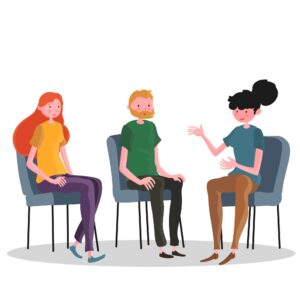
Another crucial thing to do is to consult professionals such as therapists or counsellors. This is very important because trauma causes emotional wounds which often take time and prove difficult to heal. One of the evidence based approaches to healing is through psychotherapy. This is talk therapy that attempts to explore your mind. Clinical psychologists are in the best position to address this with various evidence-based techniques. These professionals have been trained and ethically sound to protect our confidentiality and privacy. Hence, they are best positioned to support us as we heal from our trauma and break free from the cycle of abuse. While you are still navigating your recovery, they can as well help to direct us to a support groups of like-minds and advocacy services that will further help with coping and adjusting to life. Seeking counselling is another key resource you can harness, offering a safe space where people can talk openly about their experiences without fear of judgement or retaliation. This option is important because, beyond treatment, it can offer a psycho-educational resource that cuts across other approaches as outlined earlier.
9.Direct Abuser To Support:

You can as well direct your abuser to available support. It is not only the victim that needs support, but the abuser who may be exhibiting a negative carry over childhood trauma, also needs help. This means resources like therapy, counselling, and support groups are not only restricted to the abused alone but the abuser as well. Key institutions such as the churches, law courts, human rights organisations, police, and other law enforcement units can identify the abused and abusers and do good to point them to the available resources. One of these resources is available at absolutely no cost (FREE THERAPY) at AROGI TRAUMA CARE FOUNDATION. Call Arogi on their Toll-Free line 080011002200, and you will have access to speak with a Clinical Psychologist without paying a dime.
In conclusion, breaking trauma and the cycle of abuse are complex issues. In essence, it may be challenging and may require a multi-faceted approach to address it. With the right support, resources, and commitment, we can break the pattern and create a safer, healthier world for everyone. By taking the steps outlined above, individuals can break free from the cycle of abuse and work towards building safer, healthier relationships and communities.

Adedeji Odusanya
Odusanya Adedeji A., is a Licensed & Certified Clinical Psychologist whose domain of expertise cuts across management of specific mental health issues such as, Depression, PTSD, Anxiety & Anxiety related disorders, Substance Use Disorder, etc





